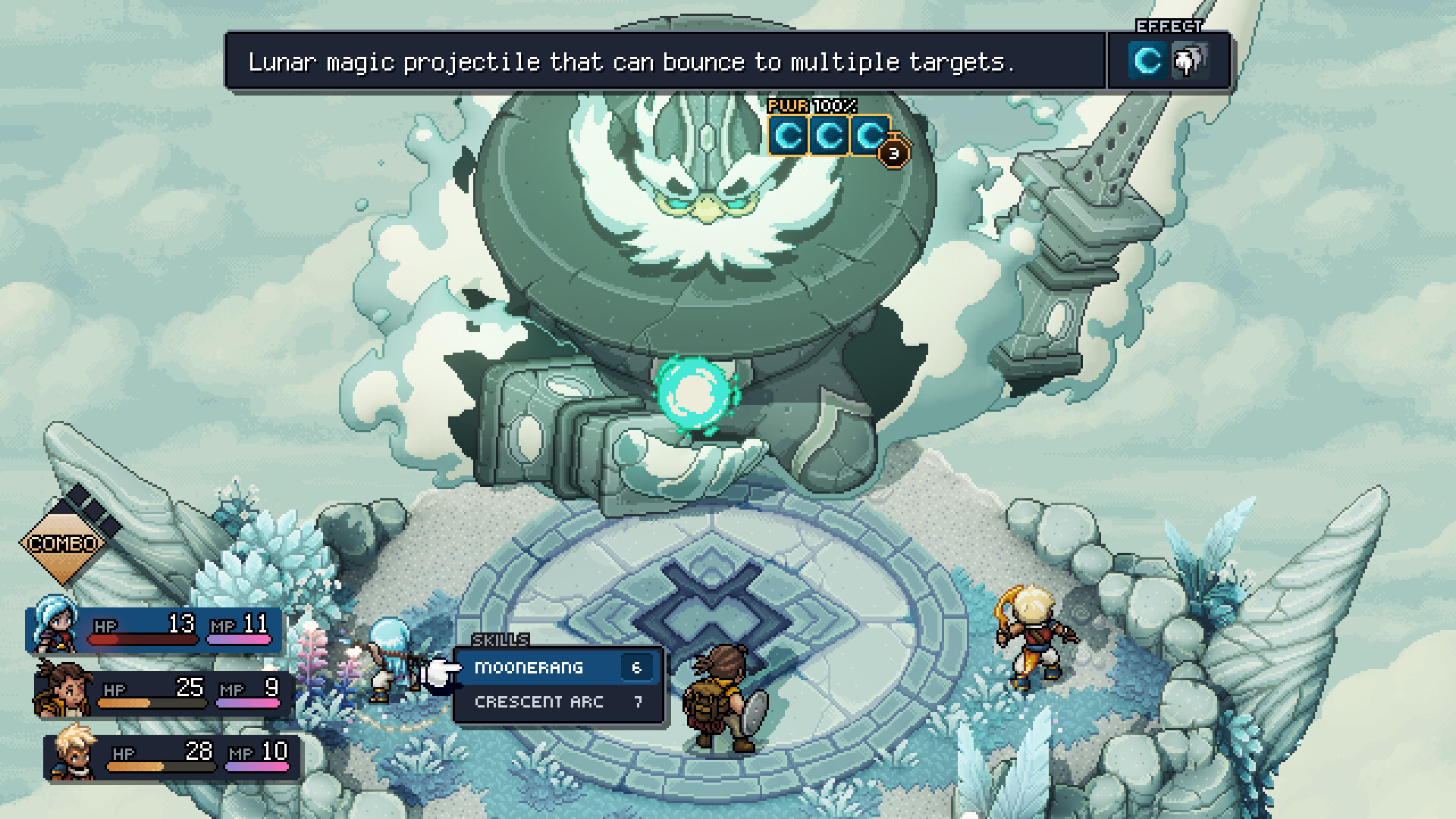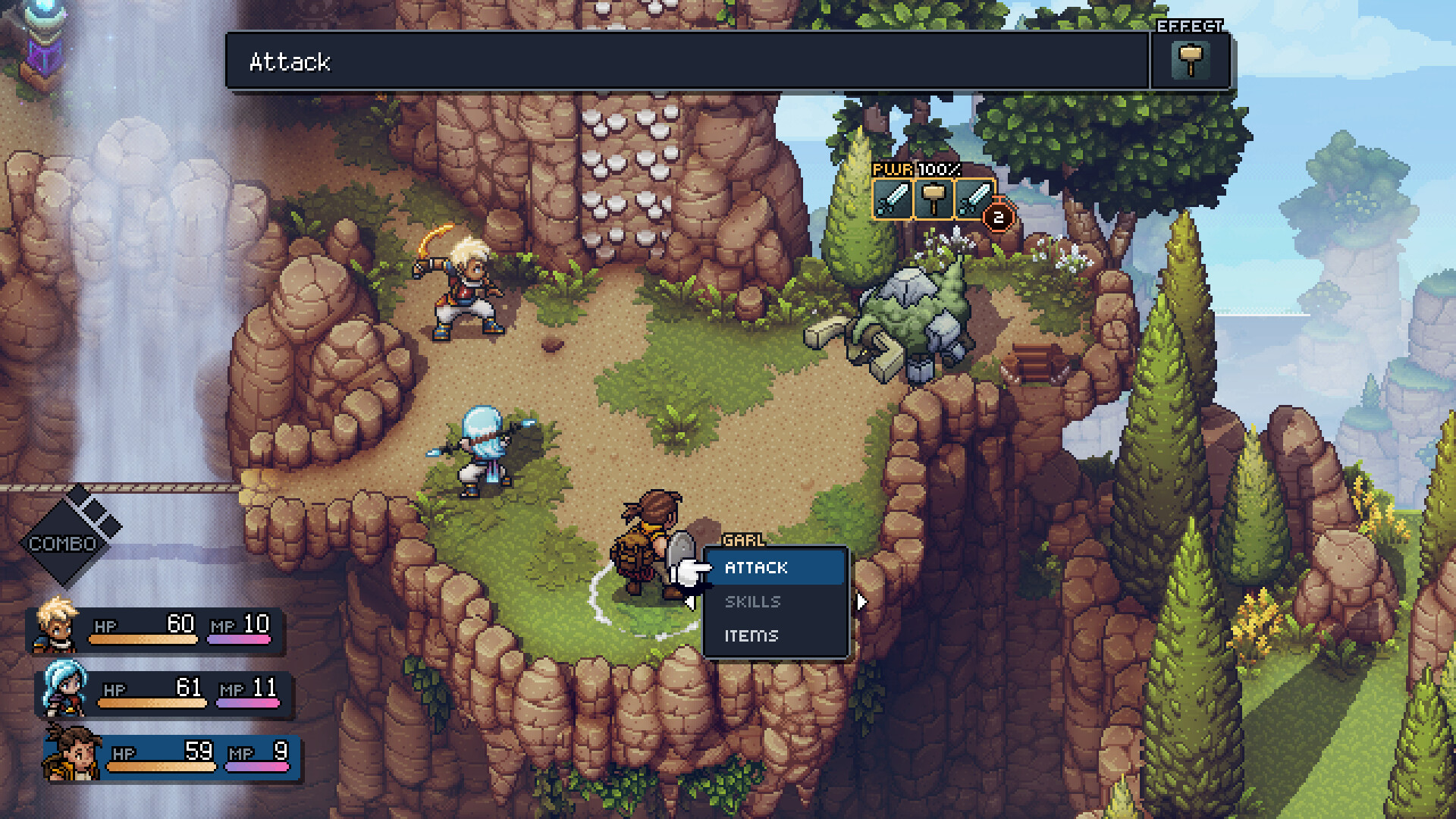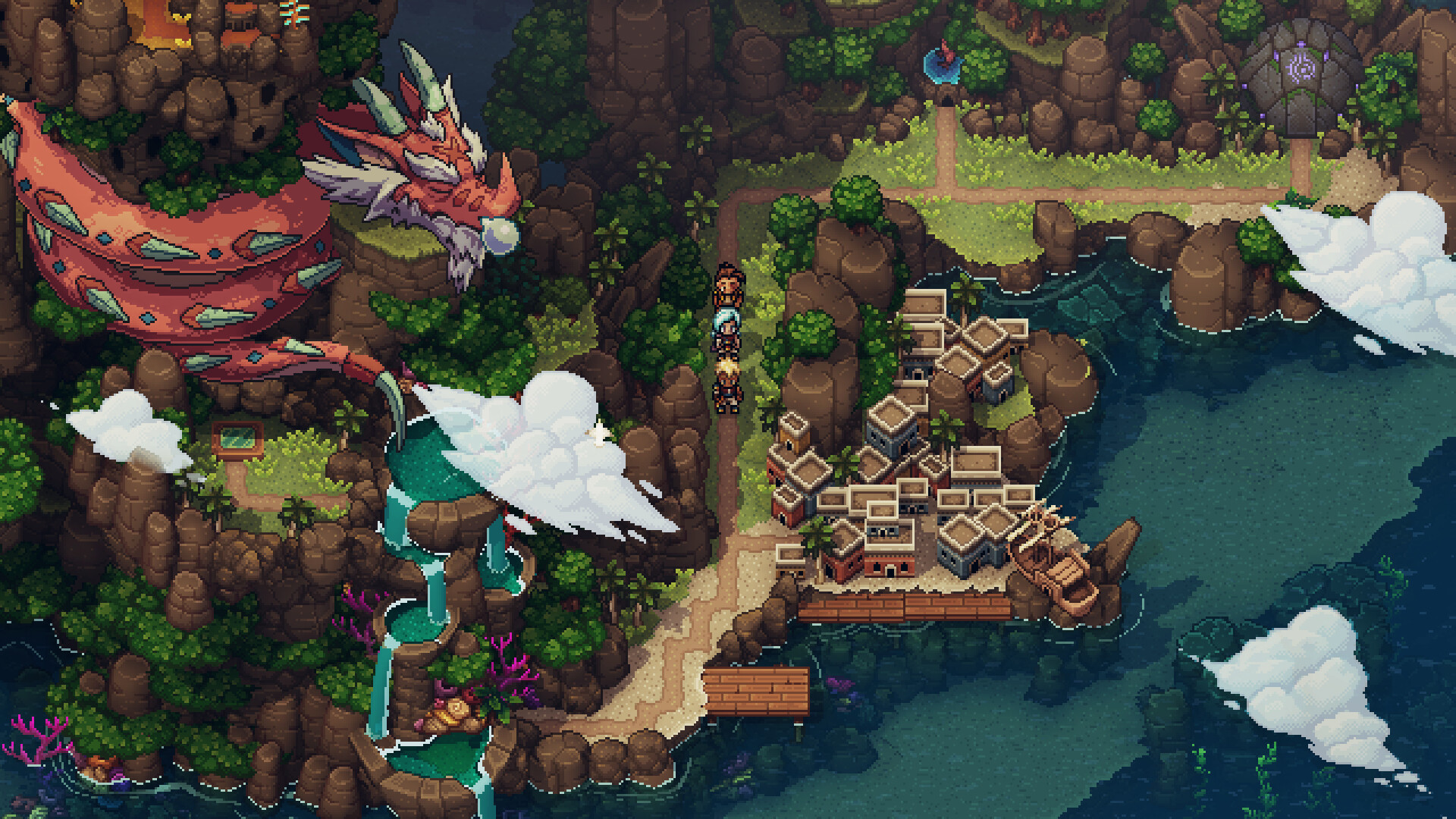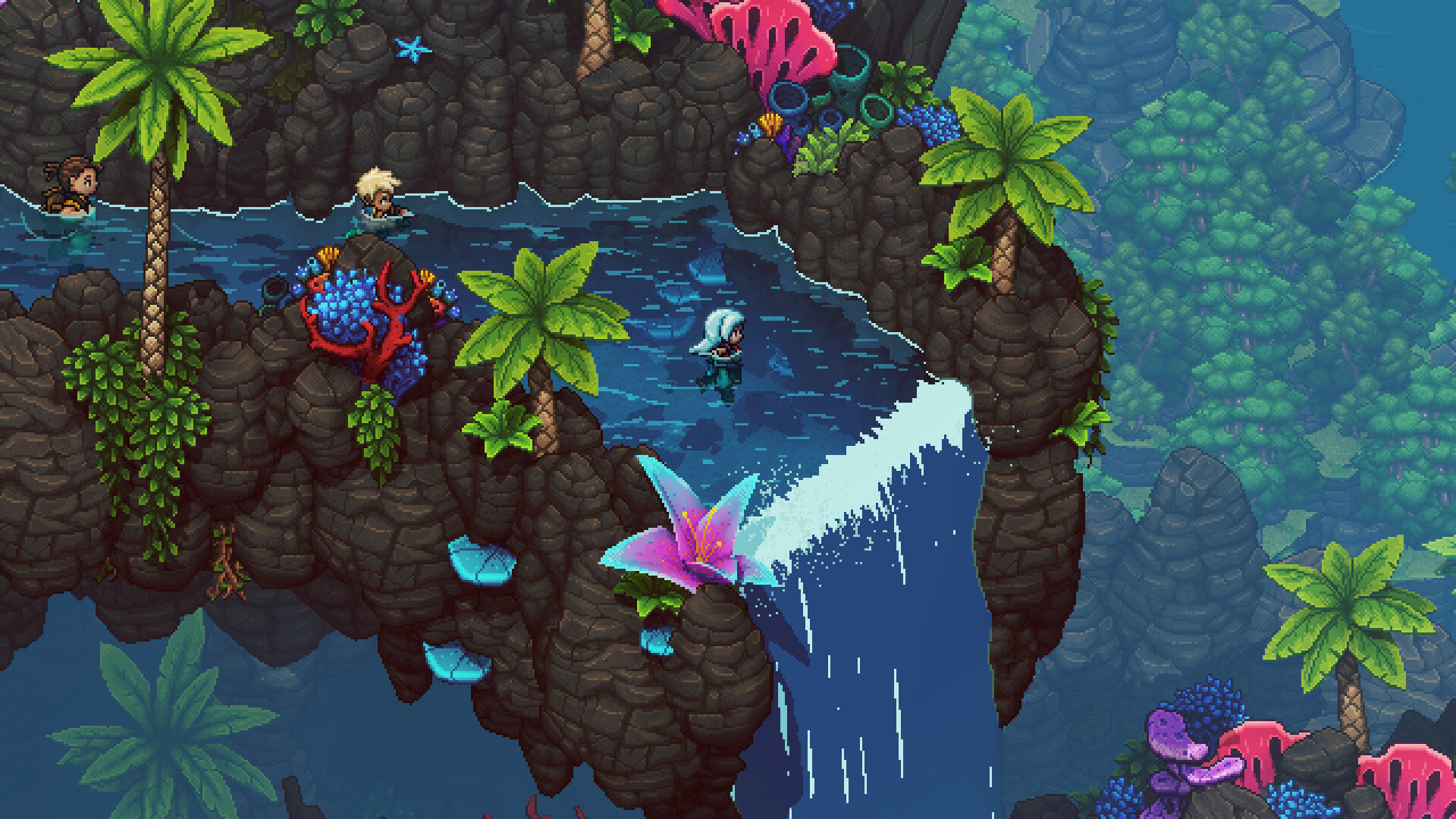There’s nothing quite like the Japanese role-playing games of the ’80s and ’90s.
It’s that wonderful feeling of going on a grand adventure with a scrappy party to fight off all kinds of zany creatures in engaging turn-based combat and listen to some truly exceptional music along the way. Those experiences, as seen in the likes of Final Fantasy IV, VI, VII and Chrono Trigger, are truly special, and I hold them dearest in all my years of gaming.
As I played through Sea of Stars, I was reminded of that magic.
Over the course of nearly 30 hours, the sophomore title from Quebec City-based Sabotage consistently brought a smile to my face, deftly capturing the awe and charm of those older titles. At the same time, it doesn’t just rely on nostalgia, confidently charting its own path with smart tweaks to the JRPG formula to modernize some of the genre’s more dated elements.
Sea of Stars isn’t just one of the better throwback RPGs we’ve gotten in recent years — it’s one of the best games in an already-stacked 2023.
Let’s get weird
In Sabotage’s first game, 2018’s The Messenger, the nascent Canadian studio drew heavy inspiration from Ninja Gaiden to deliver a delightfully retro side-scrolling action-platformer. With Sea of Stars, Sabotage has taken a similar approach to RPGs by taking big cues from such Square Enix titles as Chrono Trigger, Super Mario RPG and Illusion of Gaia.
It’s a combination that works magnificently almost across the entire board. Admittedly, though, Sea of Stars‘ story is easily its weakest element. In it, you follow Solstice Warriors Zale and Valere, two warriors destined to wield their respective Sun and Moon powers to stop an ancient threat. If that sounds like pretty standard JRPG fare, that’s because it is, and Sabotage doesn’t exactly mine it for rich character work. In this way, Sea of Stars has more common with the more narrative-light NES Final Fantasy games than the likes of, say, VI or even Chrono Trigger.
That’s not to say that there aren’t any worthwhile story elements — far from it. Indeed, there is a charming, if familiar, core tale of friendship between Zale, Valere, and their non-magical friend Garl. Three other characters later join the party as well, including the enigmatic badass ninja Seraï, and they all have pretty unique and intriguing roles as well. But even as the stakes and cast continue to grow, Sabotage doesn’t lose sight of that endearing core trio, giving Sea of Stars more sincerity and heart than its fairly standard story would suggest on the surface.
What’s more, the sharp wit that enriched The Messenger certainly shines through elsewhere in Sea of Stars. Much like how Sabotage’s first game exhibited a deep grasp of action-platformer tropes, Sea of Stars riffs on JRPG conventions in exceptionally fun ways. From saving strange rodent people from a scorned magician and arm wrestling an unassuming pirate in a seaside pub to chasing down a cranky witch and encountering a rocky creature that DJs using slabs of ice, Sabotage understands that a major appeal of classic RPGs is their wacky tonal swings. It ensures that even if you’re not exactly desperate to see the next plot development, you’re at least eager to see what hijinks you’ll get up to next.
Flipping the script
If Sea of Stars is fairly simple from a narrative perspective, it boasts much more depth in its gameplay. As mentioned, Sea of Stars adopts the turn-based structure found in countless JRPGs, but it’s how it approaches that framework that makes all the difference.
 On a base level, you have your standard three-person party, all of whom can carry out regular melee attacks as well as special ‘Skills’ that require MP. However, the difference here is an intricate ‘Lock’ system. Above all enemies’ heads lies a counter for how many turns before they can attack, and sometimes, this will be a more powerful move. In these cases, a random assortment of Vulnerabilities will be displayed in tile format (“Locks”), and using the corresponding moves will reduce that attack’s potency. Successfully “break” all Locks before their turn arrives and you can cancel out the move. It’s a clever system in which you have to deploy your party almost like chess pieces, carefully determining which moves to make to reduce — or, ideally, prevent — incoming damage, taking into consideration elements like the staff-wielding Valere’s Blunt (melee) and Moon attributes or Zale’s Sword and Sun-based abilities.
On a base level, you have your standard three-person party, all of whom can carry out regular melee attacks as well as special ‘Skills’ that require MP. However, the difference here is an intricate ‘Lock’ system. Above all enemies’ heads lies a counter for how many turns before they can attack, and sometimes, this will be a more powerful move. In these cases, a random assortment of Vulnerabilities will be displayed in tile format (“Locks”), and using the corresponding moves will reduce that attack’s potency. Successfully “break” all Locks before their turn arrives and you can cancel out the move. It’s a clever system in which you have to deploy your party almost like chess pieces, carefully determining which moves to make to reduce — or, ideally, prevent — incoming damage, taking into consideration elements like the staff-wielding Valere’s Blunt (melee) and Moon attributes or Zale’s Sword and Sun-based abilities.
The Lock system lies at the core of Sea of Stars‘ combat, and everything surrounding it only adds even more nuance. Take your ‘Magic Points’ (MP), a staple of the RPG genre. In many games, your MP is plentiful — enough, at least, to cast quite a few spells. Sea of Stars, however, often only gives you enough to use one or two Skills before depletion. On the flip side, regular attacks recover 3MP, so there’s a constant back-and-forth in which you have to alternate between these different move types.
“Through and through, Sea of Stars has one of my absolute favourite takes on turn-based combat, offering a robust and dynamic system that remains engrossing after dozens of hours.”
I appreciate how much more precious this made Skills feel, especially when I had to consider their respective utilities — and unique input-based minigames — on the fly with respect to Vulnerabilities and breaking Locks. Sure, 6MP Valere’s Crescent arc can hit multiple enemies in an arc, but for 11MP she can use a Lunar Shield that can create protective barriers to shield the party from any single hit, no matter how powerful, while also slightly healing them — a useful ‘ace in the hole’ should I fail to break all locks. Garl, for his part, can spend a mere 3MP to ‘Hurl’ one enemy closer to another to hit multiple at once or save up for ‘Nourish’ to significantly heal one party member without using an item. Each character only has a few different moves at their disposal, but the ways in which you have to mix and match them more than make up for that.
But adding to your arsenal is another combat element — one directly inspired by Chrono Trigger — called Combo Moves, which let party members combine their respective abilities for more powerful ones. However, Sea of Stars expands on this much more by adopting a three-tiered metre-based system for this mechanic. Instead of expending MP like in Chrono Trigger, you’ll have to slowly fill this gauge through battle actions, up to three times for Levels 1, 2, and 3. Naturally, the potency of each combo maneuver increases between levels, and it’s up to you to decide on the fly about when to execute them.

Do you pull off a Zale and Valere’s Lvl. 1 Solstice Strike, which targets one enemy for a decent amount of damage from their combined Sword and Blunt attributes, or bank this for the Level 2 X-Strike, which mixes Sun, Sword and Seraï’s poison affinity and hits all enemies? Throw in party healing moves, like Zale and Valere’s Level 2 Mending Rain, and it becomes even more of a risk-reward type system.
All of this is before you even consider the many other flourishes that Sabotage has added to make Sea of Stars feel more modern compared to the titles that inspired it. Instead of random encounters, you can find enemies in the field, like in Chrono Trigger. Tapping X right before attacks land will increase their damage, and conversely, perfectly timed button taps will decrease hits to your own HP. In-battle melee attacks and pre-emptive battle triggers in the field will net you Live Mana, which you can use to charge up battle actions with magical properties for greater effectiveness. You can swap characters mid-battle without missing a turn to further exploit Vulnerabilities. And, perhaps best of all, allies automatically revive after three turns; gone are those maddening moments in old JRPGs in which you’d revive a party member, and the enemy would immediately target them. This, of course, still requires strategy, though, since you have to determine whether your remaining party members can survive or you risk using a precious revive item.
Through and through, Sea of Stars has one of my absolute favourite takes on turn-based combat, offering a robust and dynamic system that remains engrossing after dozens of hours.
A gorgeous and inviting world
 Far be it from me to explain the beauty of Sea of Stars — just look at it. The SNES-style pixel aesthetic is absolutely stunning, and Sabotage makes it pop even more through a dynamic lighting system that Zale and Valere can actually control during various story and puzzle points.
Far be it from me to explain the beauty of Sea of Stars — just look at it. The SNES-style pixel aesthetic is absolutely stunning, and Sabotage makes it pop even more through a dynamic lighting system that Zale and Valere can actually control during various story and puzzle points.
But it’s not enough to evoke to resemble older games, and so Sabotage has created some truly memorable levels. A witch’s gothic domain. A hellish underground landscape. A waterfall-filled mountain. Sea of Stars constantly takes you through new, richly crafted and visually distinct locales, and because level scaling happens naturally as you play, you mercifully never have to spend too much time in any one area to grind.
Instead, you can really appreciate the intricate level design, which, to my pleasant surprise, was far more vertical than I expected. No doubt drawing from its platforming experience from The Messenger, Sabotage has impressively given every dungeon and even town several floors. That freedom of movement to run, climb, shimmy, and swim in all directions does wonders in making traversal feel dynamic and diverse, and, on a broader level, create a strong sense of pacing. There’s even a light Metroidvania element — acquiring new items or abilities to unlock previously inaccessible areas — to encourage greater exploration in new and old areas alike.
 Sweetening the whole experience is a stellar soundtrack. Much has been said about Chrono Trigger composer Yasunori Mitsuda’s involvement in Sea of Stars, and his work is definitely as good as you’d expect. But considering he only worked on about 10 tracks, that means most of the musical contributions actually came from The Messenger composer Eric W. Brown, and his work is absolutely fantastic in its own right. It’s a thoroughly catchy score throughout, and I often found myself bopping my head as I zipped through areas.
Sweetening the whole experience is a stellar soundtrack. Much has been said about Chrono Trigger composer Yasunori Mitsuda’s involvement in Sea of Stars, and his work is definitely as good as you’d expect. But considering he only worked on about 10 tracks, that means most of the musical contributions actually came from The Messenger composer Eric W. Brown, and his work is absolutely fantastic in its own right. It’s a thoroughly catchy score throughout, and I often found myself bopping my head as I zipped through areas.
The verdict
Many games nowadays aim to emulate the look and feel of their retro counterparts, but few do that as well as Sea of Stars. Uneven narrative aspects aside, Sabotage’s second game enriches classic RPG staples like turn-based combat with much more depth and variety, all while creating a beautiful and meticulously crafted world that’s a joy to dive into. JRPG newcomers and veterans alike should absolutely play this Canadian gem.
Sea of Stars will launch on PlayStation 4/5, Xbox One, Xbox Series X/S, Nintendo Switch and PC on August 29th. The game will also be available through Game Pass and PlayStation Plus Essential on day one.
Image credit: Sabotage
